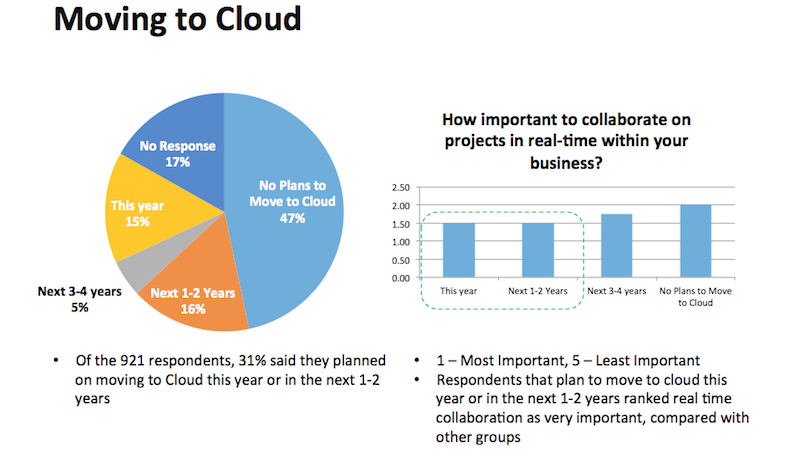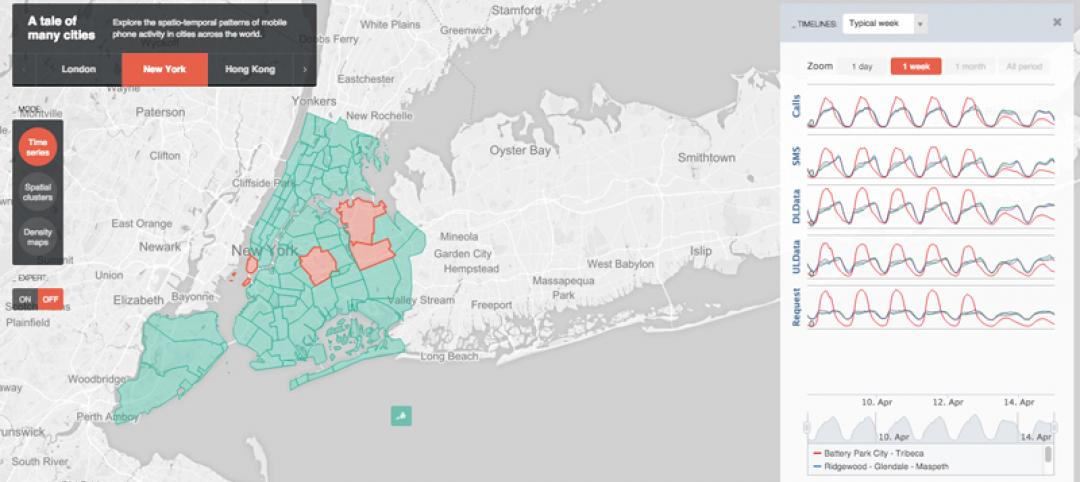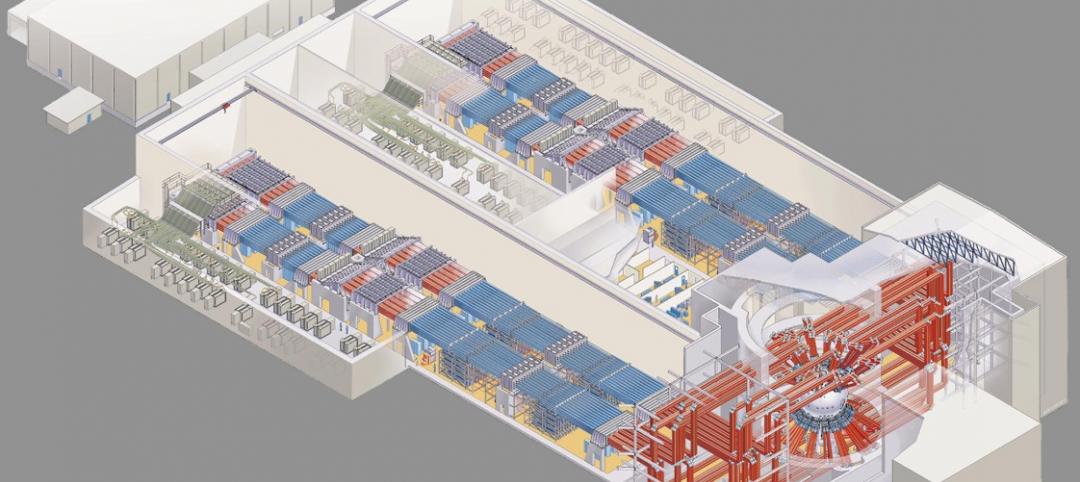The majority of construction companies currently aren't using cloud software, and fewer than two-fifths plan to move their takeoff, estimating, or project management functions onto the cloud within the next four years, according to a survey of estimators, executives, and project managers conducted by Houston-based On Center Software, which provides technology solutions to construction professionals.
Among the survey’s 921 respondents, 42% were estimators, 22% managers or chief estimators, 22% project managers, and 13% executives.
Being able to communicate using a single source of data is the most important factor to all respondents when they are evaluating different software providers. More than 60% of each respondent group indicates that being able to integrate their systems—particularly estimating, takeoffs, and project management—is a requirement when evaluating providers.
The respondents are also looking for solutions that minimize costly errors and rework.

Yet, about 70% of those polled say their companies aren’t using cloud software today. However, 15% plan to move their processes to the cloud this year, 16% within the next two years, and 5% within the next four years.
Nearly half of the respondents—47%—aren’t planning to move their processes to the cloud within this time period.
Angelo Castelli, On Center Software’s Chief Operating Officer, points out the irony of this resistance, in that a significant portion of the industry “doesn’t realize” yet that the kind of broad collaboration companies are seeking, which would allow them to communicate about projects in real time using a single data source, can only be provided by the cloud.
The survey’s findings, though, do seem to reflect the construction’s industry’s basic conservatism when it comes to technology. Laptops still dominate as the preferred mobile device among the respondent groups. Less than half of the respondents are currently using smartphones. Android is the most widely used smartphone among respondents whose companies plan to move to the cloud within the next two years.
Related Stories
BIM and Information Technology | Nov 3, 2015
How virtual and augmented reality can shape architecture and design
Gensler's Alan Robles examines a few ways VR and AR could create value for architecture and design professionals.
BIM and Information Technology | Oct 29, 2015
MIT develops ‘river of 3D pixels’ to assemble objects
The Kinetic Blocks can manipulate objects into shapes without human interference.
BIM and Information Technology | Oct 27, 2015
Magic Leap's breakthrough augmented reality project continues to generate support
The company is developing the Dynamic Digitized Lightfield Signal. It projects images onto the retina, giving users an interactive 3D experience.
BIM and Information Technology | Oct 26, 2015
Tableau’s new app, Vizable, converts spreadsheets into charts and graphs
Everyday users can simplify large amounts of data and sift through it interactively.
Architects | Oct 20, 2015
Four building material innovations from the Chicago Architecture Biennial
From lightweight wooden pallets to the largest lengths of CLT-slabs that can be shipped across North America
BIM and Information Technology | Oct 19, 2015
A robotic arm can 3D print, etch, solder, and carve from a desktop
It’s not just a 3D printer. The creators say Makerarm can also etch, solder, and put icing on cake.
BIM and Information Technology | Oct 19, 2015
New web tool from MIT organizes human movement in interactive graphs
Users can explore the mobile phone activities in London, New York, Los Angeles, and Hong Kong.
BIM and Information Technology | Oct 12, 2015
NIBS launches effort to develop BIM guideline for owners
Aim is to provide uniformity in the delivery of BIM projects.
BIM and Information Technology | Oct 11, 2015
VR for all: How AEC teams are benefiting from the commercialization of virtual reality tools
AEC teams are using gaming engines to not just showcase their projects, but to immerse their clients, end users, and Building Team members in highly detailed, fully lit environments that simulate the final structure.
BIM and Information Technology | Oct 9, 2015
Facebook’s data center complex has become economic engine for one North Carolina town
Cities are now vying for these facilities with sizable tax incentives.

















